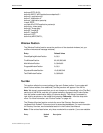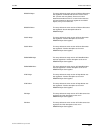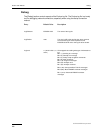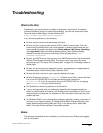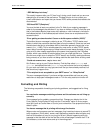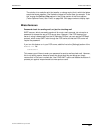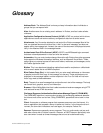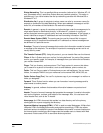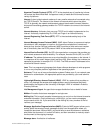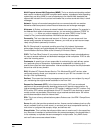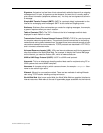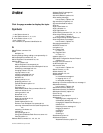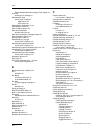
287
QUALCOMM Incorporated
Glossary
Address Book. The Address Book is where you keep information about individuals or
groups that you correspond with.
Alias. Another name for an existing user’s address. In Eudora, an alias is also called a
nickname.
Application Configuration Access Protocol (ACAP). ACAP is a protocol which allows
applications to store and retrieve arbitrary configuration data from a central server.
Attachments. Any file can be attached to and sent with a Eudora message. Most of the
time, an attached document functions like a “rider” to the email message, and does not
appear within the message text. Instead, the name of the document is displayed automat-
ically in the Attached field in the message header.
Authenticated Post Office Protocol (APOP). APOP is an MD5-based login command
that does not send passwords in clear text over the network.
Automation. You can control and exchange information with Eudora from other programs
that support the Windows Automation Interface, such as Microsoft Visual Basic. These
options give you external access to Eudora mail folders, mailboxes, and messages, and to
the Eudora application itself.
BinHex. This is an attachment decoding method best used for recipients on a Macintosh
with an email reader that is not MIME-compliant.
Blind Carbon Copy (Bcc). In this header field, you enter email addresses or nicknames
of people to whom a blind copy of the message is to be sent. These recipients are not
displayed in the message header, and the recipients in the To or Cc fields will not know
that a copy went to these addresses.
Body. The part of an email message that contains the main text of the message. The body
can contain text, graphics, sound, and video clips.
Browser. A World Wide Web client that is able to send and receive messages using HTTP
and read and format HTML documents.
Challenge-Response Authentication Mechanism-Message Digest 5 (CRAM-MD5).
The CRAM-MD5 algorithm is an encryption strategy for exchanging passwords between
the Internet mail server and a client. Using CRAM-MD5, passwords are not sent in clear
text.
Client. A computer or software program that accesses resources over the Internet. It is
also an application that requests a server to perform a function. In the Internet mail envi-
ronment, the term client indicates a mail user agent, for example, Eudora Pro.
Daemon. Daemons are generally server programs. They run continuously and are avail-
able when clients wish to initiate a session. However, an SMTP daemon periodically acts
as a client when it needs to forward messages that are not to be delivered locally.



